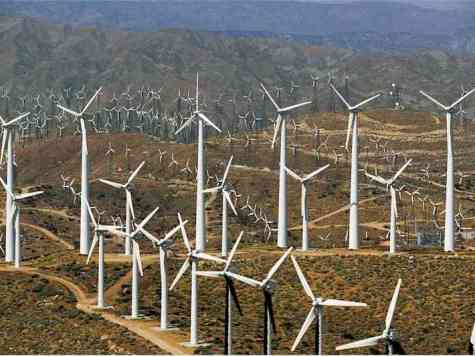A new study from the Swedish University of Agricultural Sciences, combining an impressive six hundred other studies, describes the severe effects wind turbines can have on wildlife. Not only are the disturbances and noise of the building of turbines an issue but also the sound of the windmills rotating and electromagnetic fields (EMF) caused by transferring the electricity produced to the mainland.
At the construction phase, for example, “extreme noise from pile-driving” is observed to cause “significant avoidance behaviour in marine mammals” and “highly likely to cause mortality and tissue damage in fish.”
On the noise of the blades there was “avoidance of the offshore wind farm (OWF) area by harbour porpoise, and possibly a habituation over time.”
EMF affects “cartilaginous fish, which use electromagnetic signals in detecting prey” and EMF could also disturb fish migration patterns.”
The OWF “may also alter local biodiversity patterns and lead to undesired effects.”
Onshore wind farms also have severe effects on animals and birds. A paper published in 2013 from Poland looked at domestic geese (Anser anser f domestica) bred 50m from a wind turbine against 500m for the control group.
After twelve weeks monitoring noise levels and the stress measuring cortisol levels the researchers concluded: “Lower activity and some disturbing changes in behavior of animals from group I (50m) were noted.
“Results of the study suggest a negative effect of the immediate vicinity of a wind turbine on the stress parameters of geese and their productivity.”
In Portugal a study also found that foals born near wind turbines developed Equine Flexural Limb Deformities.
Biologist Dr. Lynne Knuth, in a letter to the Public Service Commission of Wisconsin, testified: “The problems with animal reproduction reported in the wind farms in Wisconsin are lack of egg production, problems calving, spontaneous abortion (embryonic mortality), stillbirth, miscarriage and teratogenic effects:
In chickens: Crossed beaks, missing eyeballs, deformities of the skull (sunken eyes), joints of feet/legs bent at odd angles. In cattle: missing eyes and tails.”
While these effects seem to occur in the immediate vicinity of a wind turbine they are hugely important to humans. It has long been reported that those living near wind farms suffer from ill health. Sleep deprivation, headaches, tinnitus, balance problems, motivational difficulties and depression are just some of the alleged effects.
Wind farms continue to be a controversial subject both on and offshore. Not only is the power in need of government subsidies, the comparative cost of producing a Megawatt (MWh) of power ranges from £60 to £65 for coal and gas through to £90 to £150 respectively for onshore and offshore wind farms. Certainly in the UK there is increasing resistance from the population, being the proverbial blot on the landscape.
Many wind farm proponents point to psychogenesis and its subset psychsomaticism, where the person has the real symptoms but they are psychological induced, rather than physically induced. One has to say with animals it is highly unlikely.
When the West Country band The Wurzels release a new record bemoaning wind farms, resistance has to be taken seriously.

COMMENTS
Please let us know if you're having issues with commenting.